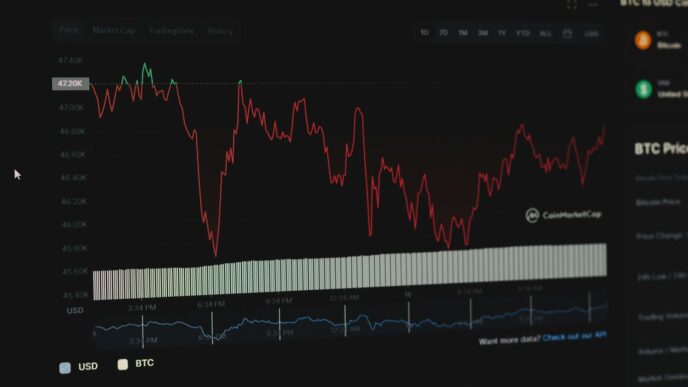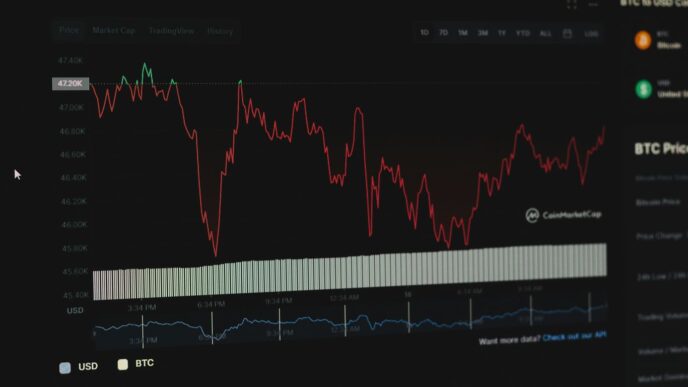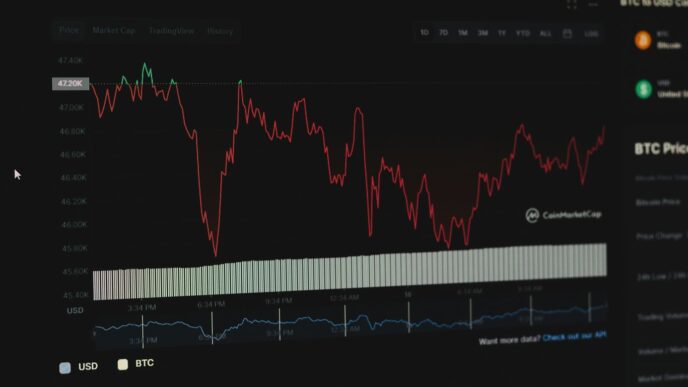The Asia Pacific stock market is a huge and dynamic place. It’s got a lot going on, from fast-growing economies to new tech ideas. Figuring out where to put your money can feel like a puzzle. We’re going to look at what’s happening right now and what might be good to know if you’re thinking about investing in this part of the world. It’s not always straightforward, but there are definitely opportunities if you know where to look.
Key Takeaways
- The Asia Pacific stock market is growing, with countries like China, Japan, and India leading the charge. More people are getting into trading, partly because of phone apps and better internet access.
- While some markets are well-established, others are still developing, creating chances for smart investors to find undervalued companies. It’s a big region with lots of different types of economies.
- Technology and changing consumer habits are big forces. Think about where people are spending their money and what new gadgets or services are becoming popular.
- Doing your homework on the ground is important. Understanding local business practices and keeping an eye on currency changes and government rules can help you make better choices.
- It’s wise to spread your investments around. Don’t put all your eggs in one basket; invest in different countries and industries to lower your risk.
Understanding the Asia Pacific Stock Market Landscape
Defining the Asia-Pacific Market
The Asia-Pacific (APAC) region is a huge area, covering not just Asian countries like China, Japan, and India, but also places like Australia and New Zealand. It’s a really diverse market, mixing developed economies with emerging ones. This mix means there’s a lot going on, from established financial centers to rapidly growing new markets. In 2024, APAC continued to be a major player in initial public offerings (IPOs), both in terms of how many companies went public and the money raised. This shows just how active the investment scene is here, offering thousands of stocks to choose from.
Growth Drivers in the Region
Several things are pushing growth in APAC’s stock markets. A big one is the expanding middle class, which means more people have money to spend and invest. Financial inclusion is also on the rise, making it easier for more people to get involved in trading. Plus, the spread of mobile trading apps and better internet access means stock trading is becoming more accessible to a wider range of people. It’s not just about domestic investors either; international investors are also showing a lot of interest.
Here are some key factors contributing to the growth:
- Expanding Middle Class: More disposable income leads to increased consumer spending and investment.
- Technological Advancements: The region is a hub for innovation, driving growth in tech-related industries.
- Increasing Financial Inclusion: More people are gaining access to financial services and investment opportunities.
- Global Trade Hub: APAC is the world’s largest trading region, benefiting from global economic activity.
Key Economic Indicators to Watch
When looking at the APAC stock market, keeping an eye on certain economic signs is pretty important. These indicators can give you a heads-up on where the market might be heading. Things like inflation rates and interest rate policies are always big ones to watch, as they can make markets jumpy. Geopolitical events also play a significant role; trade tensions or changes in government policies can really shake things up. Understanding these factors helps in making smarter investment choices.
Here’s a quick look at what to monitor:
- Inflation Rates: How fast prices are rising can affect company profits and consumer spending.
- Interest Rate Policies: Central bank decisions on interest rates impact borrowing costs and investment attractiveness.
- Geopolitical Developments: Trade relations, political stability, and regulatory changes across countries can influence market sentiment.
- Currency Exchange Rates: Fluctuations in currency values can significantly affect the returns on foreign investments.
Navigating Investment Opportunities in Asia Pacific Equities
Attractive Valuations and Long-Term Potential
When you look at the Asia Pacific region, it’s hard to ignore the long-term story. This area is growing faster than most other parts of the world, and it’s becoming a major player in global tech and industry. Even though it’s a powerhouse, it’s still a smaller part of big global stock indexes than you might expect. For instance, as of mid-2024, Asian markets outside of Japan made up less than 9% of the MSCI AC World Index. That means there’s a lot of room for growth and potentially more opportunities than what’s currently reflected in broad international benchmarks.
What’s also interesting is that many Asian markets look pretty reasonably priced right now. Compared to developed markets, which are trading above their historical averages, Asian markets are sitting around their 20-year average. There have even been times when they’ve traded higher within that range. This could mean a good entry point for investors looking for value. While there are always geopolitical bumps in the road and uncertainty about inflation and interest rates, these conditions can actually create chances for smart stock picking, especially in emerging and Asian markets. North American and European investors are starting to take a more opportunistic approach to the region, which could signal a shift in how international capital flows into Asia North American and European principal investors are reducing their presence in Asia.
Exploiting Market Inefficiencies
The Asia Pacific market is a real mix. You’ve got developed economies like Hong Kong and Singapore alongside developing ones such as Indonesia and Vietnam. This diversity is key because it creates inefficiencies that active managers can look to exploit. These markets aren’t always as closely watched or as perfectly priced as their Western counterparts. This means there’s a better chance of finding companies that are undervalued or whose true potential isn’t yet recognized by the broader market.
Think about it: if a market is less covered by analysts or has fewer large institutional investors, there’s more room for individual stock performance to really stand out. This is where doing your homework, or having a team that does, really pays off. It’s about digging into the specifics of each country and company, which takes time and effort, but the rewards can be significant. We’ve seen this particularly in the mid and small-cap segments within ASEAN countries, where a good number of stocks have seen substantial gains compared to the bigger players.
The Role of Retail Investors
Across Asia, more and more people are getting involved in the stock market. This is happening because of a few things: a growing middle class, more people having access to financial services, and the rise of easy-to-use mobile trading apps. Countries like China, Japan, and India are seeing a big jump in this activity, with both local and international investors participating. The internet is becoming more widespread, making it simpler for everyday people to start trading stocks. This increased participation from retail investors can sometimes lead to interesting market dynamics and opportunities, especially as they start to focus on themes that are shaping the global economy, like technology and changing consumer habits.
Key Trends Shaping the Asia Pacific Stock Market
Technological Innovation and Industrial Hubs
The Asia Pacific region is really stepping up as a global center for tech and industry. Think about it – countries here are not just making things anymore; they’re designing and innovating. This shift means a lot of new companies are popping up, especially in areas like artificial intelligence, semiconductors, and green tech. These aren’t just small players either; many are becoming major forces on the global stage. It’s a big change from just a few years ago when the focus was more on manufacturing.
Impact of Geopolitical Factors
Okay, so things aren’t always smooth sailing. Geopolitical stuff – like trade tensions or political shifts in certain countries – can really shake things up. These events can create uncertainty, which investors tend to dislike. It means that even if a company is doing great, external political events can cause its stock price to drop. Keeping an eye on international relations and government policies is super important for anyone investing in this part of the world. It’s not just about the company’s balance sheet anymore; you have to consider the bigger picture.
Evolving Consumer Behavior
What people are buying and how they’re buying it is changing fast in Asia. With more people joining the middle class, there’s a growing demand for better products and services. Plus, everyone’s online now, right? Mobile shopping and digital payments are huge. This means companies that understand these new consumer habits and can adapt quickly are the ones likely to do well. Think about companies focused on e-commerce, digital entertainment, or even things like premium food and beverage – they’re often seeing a lot of interest.
Strategies for Success in Asia Pacific Markets
The Importance of On-the-Ground Research
Look, trying to figure out the Asia Pacific stock market from afar can be tough. It’s a huge region with so many different countries, each with its own way of doing things. That’s why getting boots on the ground, so to speak, is a really smart move. It means actually talking to people, visiting companies if you can, and just getting a feel for what’s happening locally. This kind of research can help you find companies that aren’t always in the big indexes, the ones that might be flying under the radar but have serious potential. Think about it – a lot of the smaller and mid-sized companies in places like Southeast Asia have seen some pretty impressive growth, way more than the big guys sometimes. It takes time and a good understanding of each market’s quirks, but the payoff can be pretty good.
Leveraging Data-Driven Investment Approaches
Beyond just talking to people, using data is a big deal. The Asia Pacific markets, especially the emerging ones, are full of unique opportunities. This is where strategies that rely heavily on data can really shine. They use things like machine learning and natural language processing to sift through tons of information, spotting patterns that humans might miss. These methods are good at adapting when the market starts shifting, which happens a lot in this region. It’s about being systematic and using scientific testing to back up investment ideas, rather than just guessing.
Active Quantitative Strategies for Alpha Generation
When we talk about ‘alpha,’ we’re basically talking about outperforming the market. Active quantitative strategies are designed to do just that. Because many Asian markets aren’t as widely covered as, say, the US market, there’s more room for these data-focused strategies to find those hidden gems. Certain investment factors, which are basically characteristics that drive stock returns, have shown to be particularly effective in Asia. By using advanced modeling and a rigorous, data-backed approach, these strategies aim to consistently generate better returns than just buying and holding a broad market index. It’s about finding an edge through smart, systematic analysis.
Sectoral Insights and Emerging Themes
When we look at what’s really moving the needle in the Asia Pacific stock market right now, a few areas stand out. It’s not just about the big, established players anymore; there’s a lot happening with newer industries and shifts in how people are spending their money.
Leading Industries in the Region
Some sectors are just naturally doing well because of where they are. Think about technology, for instance. Countries like China and India are becoming big hubs for innovation, especially in areas like biotech and robotics. We’re seeing companies there develop next-gen tech that could change how factories run or how services are delivered. It’s pretty exciting stuff.
Mid and Small-Cap Stock Performance
While the big companies get a lot of attention, it’s often the smaller ones that offer a chance for bigger growth. In places like India, private lending and venture capital are really helping these smaller firms get off the ground and expand quickly. They might not have the same access to international markets as the giants, but they’re growing fast, and some are even starting to look global.
Focus on Healthcare and Demographics
Demographics play a huge role here. Countries in the Asia Pacific region have a lot of people in their working years, and that’s expected to continue for a while. This large, active population is a big support for innovation and economic growth. Plus, as people live longer and the middle class expands, the demand for healthcare services and related products is naturally going up. This makes healthcare a pretty solid area to keep an eye on for investment opportunities.
Managing Risk in the Asia Pacific Stock Market
Okay, so investing in the Asia Pacific is exciting, but let’s be real, it’s not all smooth sailing. There are definitely some bumps in the road you need to be aware of. Think of it like planning a big trip – you check the weather, pack accordingly, and have a backup plan just in case. Investing is similar.
Understanding Currency Exchange Rates
One of the first things that can mess with your returns is currency. If you invest in, say, Japan and the Yen weakens against your home currency, your gains shrink. It’s like buying something for $100 and then finding out it’s only worth $90 when you get home. This happens all the time with currencies like the Indonesian Rupiah or the Vietnamese Dong, which can be pretty volatile. Keeping an eye on exchange rates is super important for figuring out your actual profit.
Assessing Regulatory Changes
Governments in the Asia Pacific can change the rules of the game pretty quickly. One day a certain industry might be booming, and the next, new regulations could make it harder to operate. This could be anything from new tax laws to restrictions on foreign investment. It’s why doing your homework on the local scene is a big deal. You don’t want to get caught off guard by a sudden policy shift.
Diversification Across Countries and Sectors
This is probably the most basic advice, but it really holds true here. Don’t put all your eggs in one basket. The Asia Pacific is huge and super diverse. You’ve got tech giants in South Korea, manufacturing in China, and financial hubs like Singapore. Spreading your money across different countries and different types of businesses (like tech, healthcare, consumer goods) is a smart way to cushion yourself if one area takes a hit. It’s like having multiple income streams; if one dries up, you’ve still got others.
Wrapping Up Today’s Market View
So, that’s a quick look at what’s been happening in the Asia Pacific stock markets today. It’s a big, busy place with lots of different countries and companies, and things can change pretty fast. We saw how growth is still a big theme, especially with more people getting into trading. Remember, markets have their ups and downs, and keeping an eye on what’s going on is key. Whether you’re looking at big tech or smaller companies, there are always things to watch. It’s a dynamic region, for sure, and staying informed helps you make better choices for your investments.
Frequently Asked Questions
What makes the Asia Pacific stock market exciting for investors?
The Asia Pacific region is a super dynamic place for stocks! It’s growing really fast because more people have money to spend and are starting to invest. Big countries like China, Japan, and India are leading the way. Plus, using your phone to trade stocks is getting easier than ever, making it simple for lots of people to get involved.
Are there good deals to be found in Asian stocks right now?
Yes, many Asian markets look like a good deal right now. Their stock prices aren’t too high compared to their history, especially when you look at how much they’ve grown. This is different from some other parts of the world where stocks might be more expensive. It means there’s a good chance for your money to grow over time.
What are some of the hottest trends in the Asia Pacific stock market?
Technology is a huge trend, with companies making cool new gadgets and using smart computer programs. Also, how people shop and what they like to buy is changing fast, especially with online shopping. Things happening in different countries, like new rules or disagreements between nations, can also shake things up and create chances to invest.
Why is it important to do your homework before investing in Asia?
Each country in Asia is like its own little world with different ways of doing business. To truly find the best investments, you need to understand these differences up close. This ‘on-the-ground’ research helps you find hidden gems, especially in smaller companies that might be growing faster than the big ones.
How can I protect my money when investing in Asia?
It’s smart to spread your money around! Don’t put all your eggs in one basket. Invest in different countries and different types of businesses. Also, keep an eye on how the money value changes between countries (currency exchange rates) and watch out for any new government rules that could affect your investments.
What’s the difference between the Asian market and the Asia-Pacific market?
Think of the ‘Asian market’ as just the countries in Asia, like China, Japan, and India. The ‘Asia-Pacific market’ is bigger – it includes all of Asia plus countries near the Pacific Ocean, like Australia and New Zealand. So, Asia-Pacific covers a wider area.












